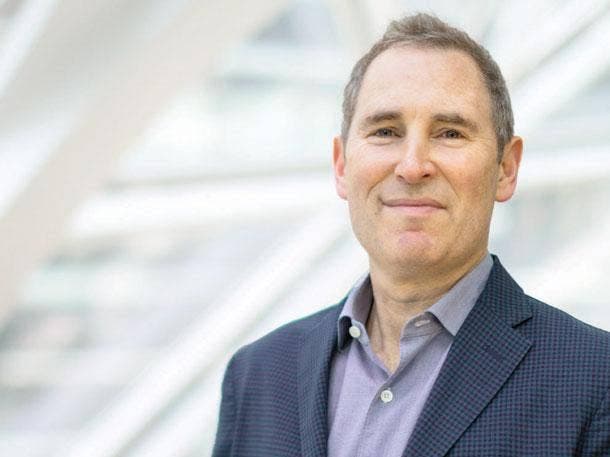Amazon Q3 2024 Earnings: CEO Jassy Says AI ‘Once In A Lifetime’ Opportunity
by nlqip

‘Our customers, the business and our shareholders will feel good about this long term,’ Amazon CEO Andy Jassy says.
Amazon CEO Andy Jassy said on the company’s latest quarterly earnings call that the vendor expects to spend more than $75 billion on capital in 2025, most of that going toward Amazon Web Services and generative artificial intelligence.
The Seattle-based cloud giant has spent $51.9 billion in capital expenditures year to date and expects about $75 billion spent in 2024, focusing on infrastructure, AWS and GenAI. But the CEO noted the long life cycle for this infrastructure–he estimated 20 to 30 years of life for data centers–and said to trust in Amazon’s history of spending responsibly.
“We’ve proven over time that we can drive enough operating income and free cash flow to make this a very successful return on invested capital business, and we expect the same thing will happen here with generative AI,” he said. “It is a really unusually large, maybe once in a lifetime, type of opportunity. And I think our customers, the business and our shareholders will feel good about this long term that we’re aggressively pursuing it.”
[RELATED: Presidio Signs ‘Huge’ AWS Agreement To Drive GenAI, Sales And Innovation]
AWS Q3 Results
Jassy shared his views on his company’s spending and the AI opportunity during Amazon’s Thursday call reporting results for its third fiscal quarter, ended Sept. 30.
During the call, Jassy highlighted AWS’ “deepest partner community” as a competitive differentiator, along with broad functionality and strong security. He also detailed the vendor’s continued investment in custom chips to help meet AI demand and achieve better AI price performance for customers scaling those workloads.
Growing AI Business
In the last 18 months, AWS has released about “twice as many machine learning and GenAI features as the other leading cloud providers combined,” Jassy said on the call.
“AWS’ AI business is a multibillion-dollar revenue run rate business that continues to grow at a triple-digit, year-over-year percentage and is growing more than three times faster at this stage of its evolution as AWS itself grew,” he said. “We felt like AWS grew pretty quickly.”
Jassy told listeners on the call that the Amazon Q continues to see “strong adoption,” with the AI chatbot saving Amazon teams $260 million in annual cost savings, 4,500 years of development work for more than 1,000 developers and migrating more than 30,000 applications to new versions of the Java Development Kit (JDK).
“Expect more practical AI game changers from Q,” Jassy said.
Jassy also said that Amazon is rearchitecting its Alexa virtual assistant devices with GenAI with next-generation foundational models, seeking to go beyond today’s GenAI apps focused on “cost avoidance productivity,” customer experience and “taking large corpuses of data and being able to summarize and aggregate and answer questions”–but not yet “really good” at taking actions for customers.
“The next generation of these assistants and the generative AI applications will be better at not just answering questions and summarizing, indexing and aggregating data, but also taking actions,” Jassy said. “And you can imagine us being pretty good at that with Alexa.”
AI Chips, Infrastructure
Jassy said that Amazon’s cloud business, like other vendors, has been hit by “less capacity than they have demand for,” primarily with chips.
Amazon’s Trainium2 machine learning (ML) training chip “is starting to ramp up (in) the next few weeks, and will be very compelling for customers and price performance,” Jasy said. “We’re seeing significant interest in these chips, and we’ve gone back to our manufacturing partners multiple times to produce much more than we’d originally planned.”
Growing demand for AI has meant more spending on data centers, networking gear and chips more expensive than central processing unit (CPU) hardware, he said. “We invest in all that upfront in advance of when we can monetize it with customers using the resources.”
Jassy said that its AI business is “more fluid and dynamic than our non-AI part of AWS,” but the vendor has “very significant demand signals” to avoid too much or not enough capacity and data center investment.
“People aren’t showing up for 30,000 chips in a day,” he said. “As the market matures over time, there are going to be very healthy margins here in the generative AI space.”
Jassy also touted Amazon’s partnership with chipmaker Nvidia, saying “we tend to be their lead partner on most of their new chips.”
Q3 In Detail
AWS sales hit $27.5 billion, up 19 percent year over year. The cloud giant has a $110 billion annualized run rate.
Operating income was $10.4 billion, up $3.5 billion year over year. Amazon Chief Financial Officer Brian Olsavsky said the vendor continues to “focus on cost control, including a measured pace of hiring,” and “focus on driving efficiencies in our infrastructure and reducing costs across the business.”
Office staff is “down slightly year over year, and it’s flat to the end of the last year,” he said.
Amazon’s stock grew about 5 percent after market close Thursday, reaching about $196 a share.
Source link
lol
‘Our customers, the business and our shareholders will feel good about this long term,’ Amazon CEO Andy Jassy says. Amazon CEO Andy Jassy said on the company’s latest quarterly earnings call that the vendor expects to spend more than $75 billion on capital in 2025, most of that going toward Amazon Web Services and generative…
Recent Posts
- Arm To Seek Retrial In Qualcomm Case After Mixed Verdict
- Jury Sides With Qualcomm Over Arm In Case Related To Snapdragon X PC Chips
- Equinix Makes Dell AI Factory With Nvidia Available Through Partners
- AMD’s EPYC CPU Boss Seeks To Push Into SMB, Midmarket With Partners
- Fortinet Releases Security Updates for FortiManager | CISA
